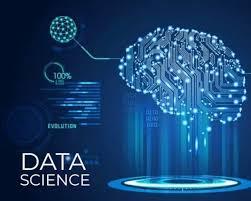Implementing MLOps Pipelines: CI/CD Workflows for Machine Learning using Jenkins, GitLab CI, or GitHub Actions

In today’s AI-driven world, building machine learning models is just the beginning. The real challenge lies in deploying these models reliably, maintaining their performance, and iterating quickly with minimal disruption. This is where MLOps — the combination of machine learning and DevOps practices — plays a critical role. Specifically, implementing Continuous Integration and Continuous Deployment (CI/CD) workflows is essential for robust machine learning operations. Tools like Jenkins, GitLab CI, and GitHub Actions have emerged as go-to solutions for building such pipelines.
For professionals aiming to master these concepts, a practical understanding of MLOps has become just as important as model development itself. This is one reason why courses designed to equip learners with end-to-end ML lifecycle skills, like a data scientist course in Pune, are gaining significant traction among tech enthusiasts and professionals.
Understanding the Importance of MLOps in Machine Learning
MLOps bridges the gap between model development and production deployment. In traditional software engineering, DevOps ensures faster releases, higher-quality software, and better collaboration. MLOps borrows these principles to bring automation, reproducibility, monitoring, and governance into machine learning workflows.
Unlike traditional applications, machine learning models are affected by changing data patterns, model drift, and retraining needs. A well-designed MLOps pipeline makes it easier to retrain models, track changes, and automate model testing and deployment using CI/CD workflows.
What Is CI/CD in the Context of Machine Learning?
In the ML world, this translates into automating steps such as:
-
Data ingestion and validation
-
Model training and evaluation
-
Model versioning and packaging
-
Testing for performance and fairness
-
Deployment to staging or production
-
Monitoring and retraining
Tools like Jenkins, GitLab CI, and GitHub Actions can be configured to run these tasks whenever changes are pushed to the codebase, ensuring consistency and repeatability.
Building MLOps Pipelines Using Jenkins
Jenkins supports building, testing, and deploying ML workflows.
Strengths of Jenkins:
-
Highly customizable through plugins
-
Supports distributed build environments
-
Works with any ML stack or environment
Example Workflow:
-
A data scientist commits code to a Git repository.
-
Jenkins detects the change and triggers a pipeline.
-
The pipeline fetches training data, runs model training scripts, evaluates model accuracy, and pushes the final model to a model registry.
-
The model is deployed automatically if it meets accuracy benchmarks.
Jenkins suits enterprises with complex pipelines and the need for fine-grained control. However, it requires more setup and maintenance.
Using GitLab CI for MLOps Pipelines
GitLab CI/CD is natively integrated into the GitLab platform, making it convenient for teams already using GitLab for version control.
Advantages:
-
Built-in version control and CI/CD in one interface
-
Easy YAML-based pipeline configuration
-
Native support for environments and secrets
Typical Use Case:
A machine learning team maintains different branches for experimentation and production. When a merge request is submitted, GitLab CI automatically trains the model on the new data, runs validation tests, and updates the production model if all checks pass.
GitLab’s visual pipeline dashboards make it easier to track experiment results and deployment histories, making it ideal for collaborative teams.
Streamlining CI/CD with GitHub Actions
GitHub Actions offers seamless integration with GitHub repositories and is ideal for developers already working in GitHub environments.
Key Features:
-
Native GitHub integration
-
Marketplace for reusable workflows
-
Support for Docker containers and matrix builds
Sample ML Workflow:
Upon a new push to the main branch, GitHub Actions:
-
Sets up a virtual environment
-
Runs model training scripts using specified dependencies
-
Stores the model in cloud storage or a container registry
-
Deploys it to a cloud-hosted inference service
GitHub Actions is lightweight, fast to set up, and works well for smaller teams or individual developers focusing on rapid deployment.
Comparing the Three Tools for MLOps
FeatureJenkinsGitLab CIGitHub Actions
Ease of Setup Moderate Easy Very Easy
Customisation High Moderate Moderate
Integration Support Extensive Native to GitLab Native to GitHub
Best For Complex pipelines Team collaboration Quick experiments
Each tool has its own strengths, and the choice depends on team needs, existing infrastructure, and familiarity with the platform.
Real-World Benefits of CI/CD in ML
Implementing MLOps pipelines using these tools leads to:
-
Faster Iterations: Automating training and deployment shortens feedback loops.
-
Reproducibility: Ensures that models can be consistently trained and deployed.
-
Risk Reduction: Automated testing catches performance and bias issues early.
-
Team Collaboration: Shared CI/CD environments standardise workflows.
For aspiring machine learning professionals, the ability to create these pipelines is becoming a must-have skill. That’s why training programmes, such as a data scientist course, often include hands-on modules for Jenkins, GitLab CI, and GitHub Actions in their curriculum.
Conclusion
As machine learning solutions scale in complexity and reach, manual model deployments are no longer feasible. MLOps practices — especially the use of CI/CD tools like Jenkins, GitLab CI, and GitHub Actions — empower teams to maintain high-quality, reliable ML systems in production. Whether you’re working in a startup or a large enterprise, building these pipelines ensures automation, scalability, and operational excellence.
Learning how to implement MLOps workflows is crucial for today’s data professionals. For those looking to stay competitive in the job market, enrolling in a well-rounded data scientist course in Pune can provide the technical foundation and practical skills needed to build and manage ML pipelines with confidence.
- Vibnix Blog
- Politics
- News
- Liberia News
- Entertainment
- Technology
- Education
- Art
- Causes
- Crafts
- Dance
- Drinks
- Film
- Fitness
- Food
- Games
- Gardening
- Health
- Home
- Literature
- Music
- Networking
- Other
- Party
- Religion
- Shopping
- Sports
- Theater
- Wellness



